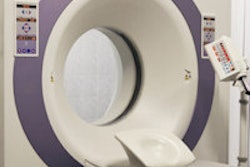Monday, December 1 | 11:20 a.m.-11:30 a.m. | SSC03-06 | Room S404AB
In this talk, researchers from Case Western Reserve University will share how textural analysis techniques may be able to decrease the number of unnecessary biopsies in ground-glass non-small cell lung nodules.Improved imaging methods are needed to distinguish benign confounding disease (fibrosis) from ground-glass nodules with no or minimal invasion and those with frank invasion to guide clinicians toward surveillance or surgical resection. Studies have shown that up to 25% of surgically resected ground-glass nodules are benign, resulting in significant overtreatment for patients who don't have lung cancer, according to senior author Anant Madabhushi, PhD.
Furthermore, these high false-positive rates are due in part to the similar appearance of benign and malignant tumors on CT, he said.
"The major cost associated with CT screening is likely to lie in the high incidence of false positives and the need for further testing and invasive procedures and/or surgery," Madabhushi said.
In their study, the researchers sought to show that computerized textural analysis of ground-glass nodules could help distinguish between nodules with no or minimal invasion and nodules with frank invasion.
"The inability of current CT techniques to define the degree of invasion in semisolid lesions has resulted in a lack of consensus in the management of these lesions," he said.
Texture analysis of CT scans offered reasonable discrimination of the level of invasion of ground-glass cancerous lung nodules, the group concluded.
"Our preliminary success in using computerized textural analysis in distinguishing between nodules with no/minimal versus frank invasion could pave the way for judicious application of surgical resection based off a preoperative CT scan," Madabhushi told AuntMinnie.com. "Noninvasive neoplasias could be followed and, optimally, all adenocarcinomas could be resected while in their minimally invasive state, when the risk of nodal disease is least and the chance of cure with surgical resection is near 100%."
For more details, take in this Monday morning talk by presenter Mahdi Orooji, PhD.




















